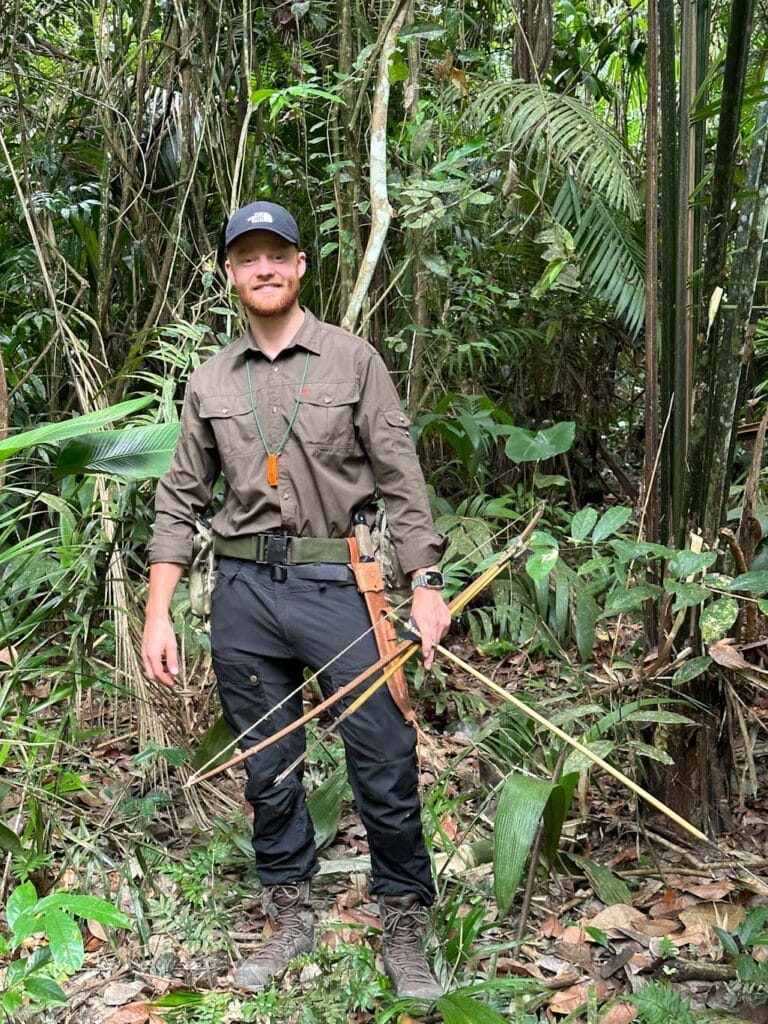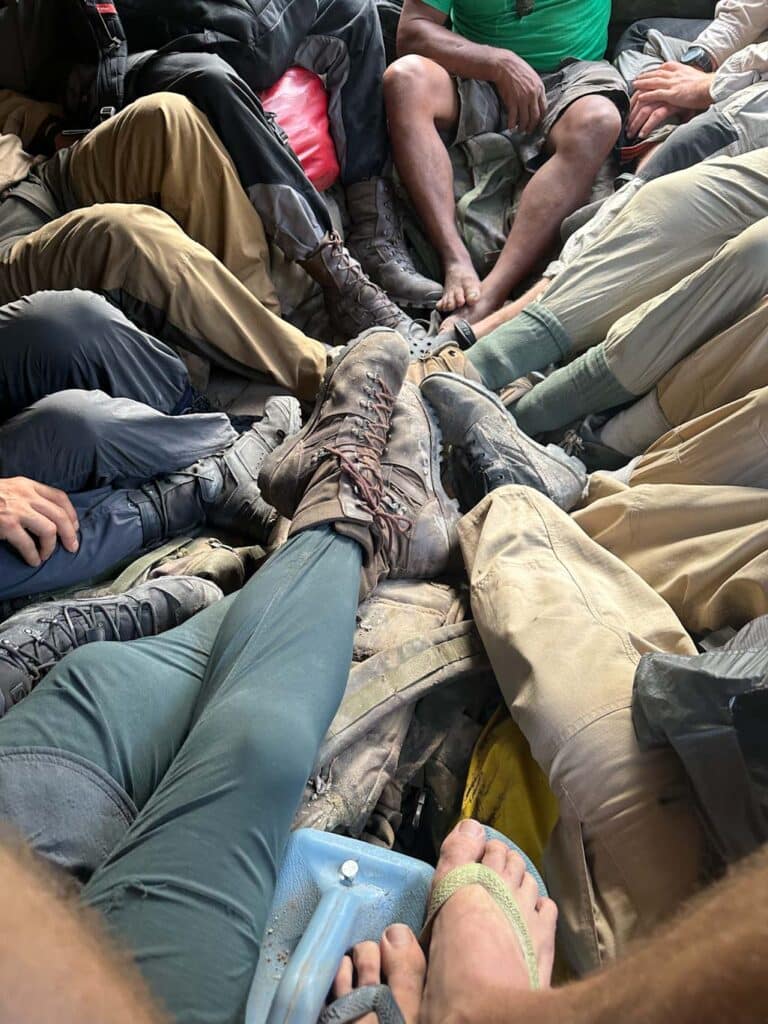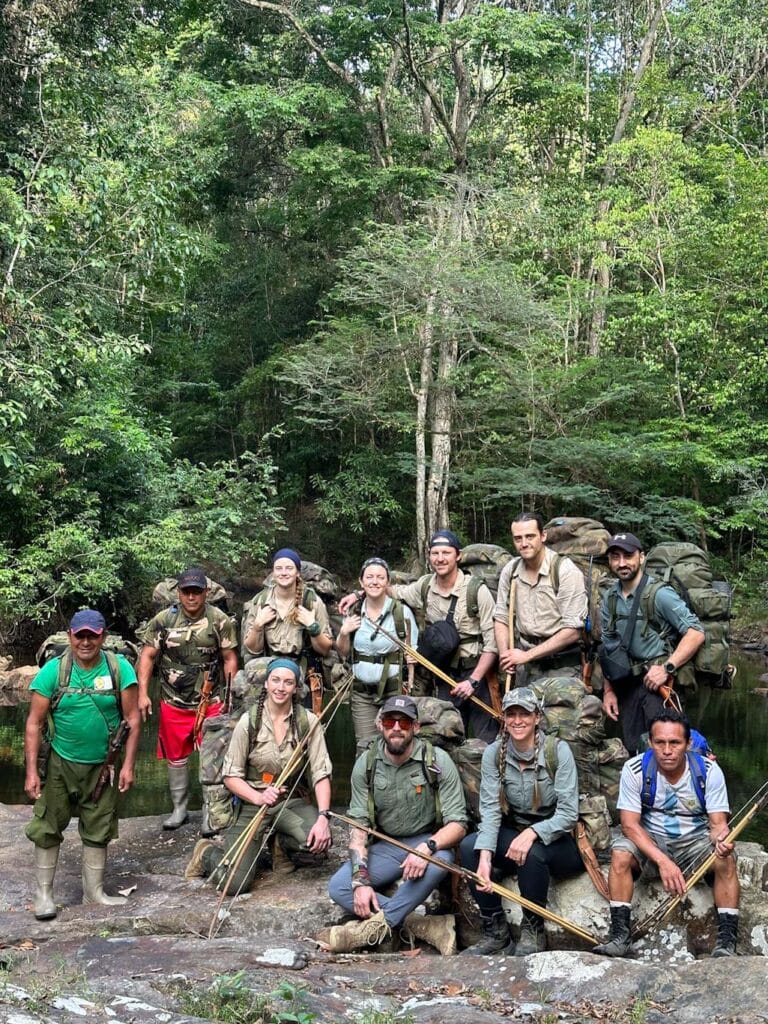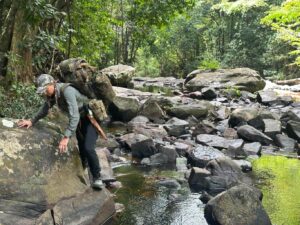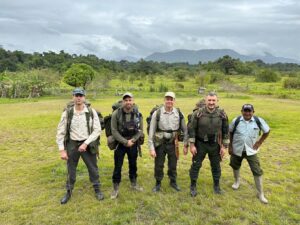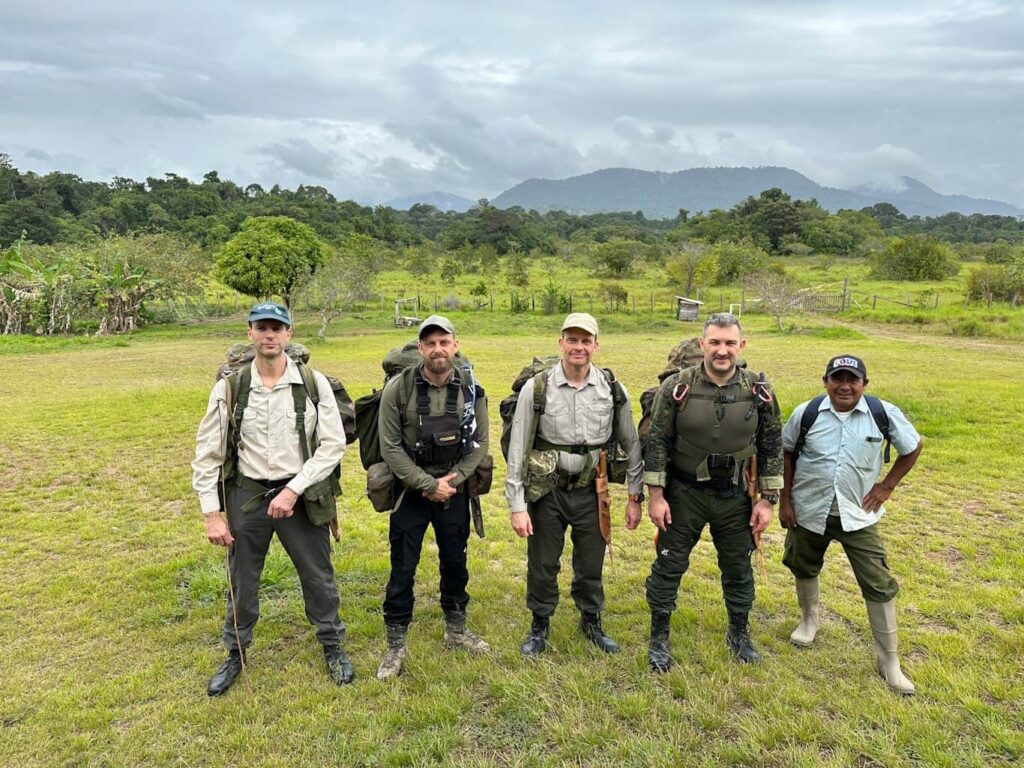
When venturing into the jungle, the right equipment can make all the difference. Learn what gear is essential for your jungle expedition and how to choose the best options for your needs.
“We often get asked about what equipment to use in the jungle. There certainly are a lot of factors that play into the importance of all the categories mentioned below. How long are you staying in the jungle? Are you sleeping in the jungle? Will you be walking with your own load in the jungle? Are you sleeping in hammocks? Etc. We typically run expedition-style trips where our guests mostly sleep in hammocks, in small personal camps under tarps. Other times in simple structures like basic jungle camps.
In most cases, we have over the years created one setup that caters for all our jungle trips. We can then scale it up and down depending on the complexity of the trip we are about to undergo.
Areas and related articles about jungle equipment
For a quick overview. Here are some areas that should be considered when deciding what equipment to use in the jungle. Some of these subjects might not have been covered in a blog as yet, so bear with us. You can always contact us directly for inquiries by going to our “Contact Us page here”. We will be running through each of these areas much more extensively in their own blog.
-
Jungle boots (Read post)Jungle boots (Read post)
-
Personal wear and clothes
-
Jungle rucksacks
-
Belt kit
-
Tarp / Basha
-
Footwear in camp
-
Hydration
-
Rations
-
Navigation
-
Water purification
-
Chest Mount
-
Machete
-
Dry bags
-
Daysack
-
Headtorch
-
Electronics
-
First aid kit
-
Communication in the jungle
-
Knife
-
Multitool
-
Hammock
-
Packing techniques for the jungle
Exploring the Jungle: What Equipment Do You Need?
When it comes to equipment, there is a never-ending line of biases, preferences, and needs. We cannot say that ours is right and therefore yours is wrong. Our experience is made from expeditions, as consultants on exploration expeditions, jungle survival courses, TV productions, and jungle tours. Some years, we spent around 250 days in the forest, so we can say that we know the stuff we use works for us. When all this is said, your equipment might be even better or might just work perfectly for your needs, and that is all okay. Our biggest asset is, in fact, our guests and participants, who often bring their own kit, and we love to see and test their equipment in the jungle.
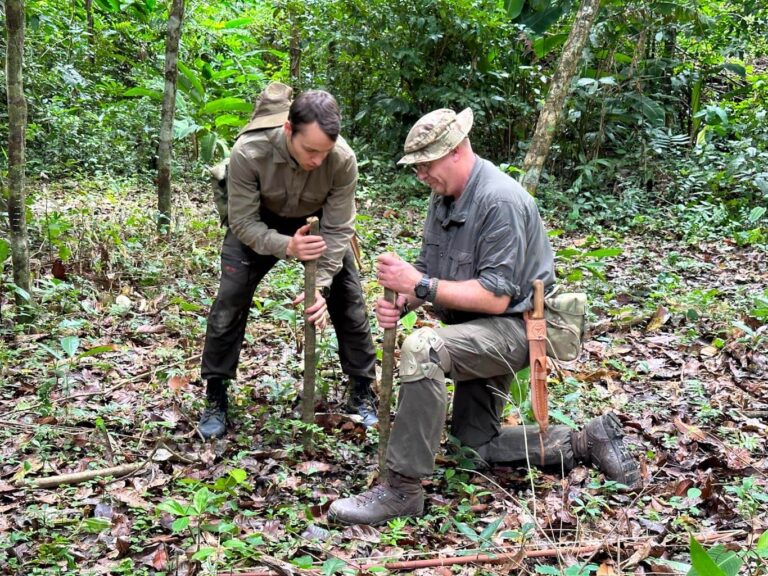
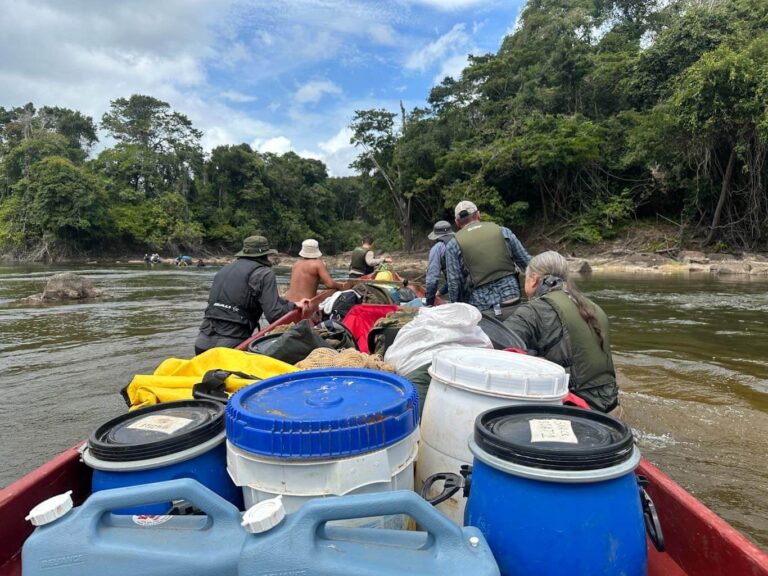
Understanding the Jungle Environment
Before we dig into the specific items, let us get an understanding of the environment we are dealing with. The tropical zone constitutes roughly 36% of the earth’s land surface area, and its latitude is defined as the Tropic of Cancer, which is 23.5 degrees north, and the Tropic of Capricorn, which is 23.5 degrees south. Within this zone, you can find deserts, snow-capped mountains, and terrain very different from what you might consider tropical, but what is common for the whole tropical belt is that it receives more direct sunlight as opposed to the northern and southern counterparts. Our blog focuses specifically on rainforest areas.
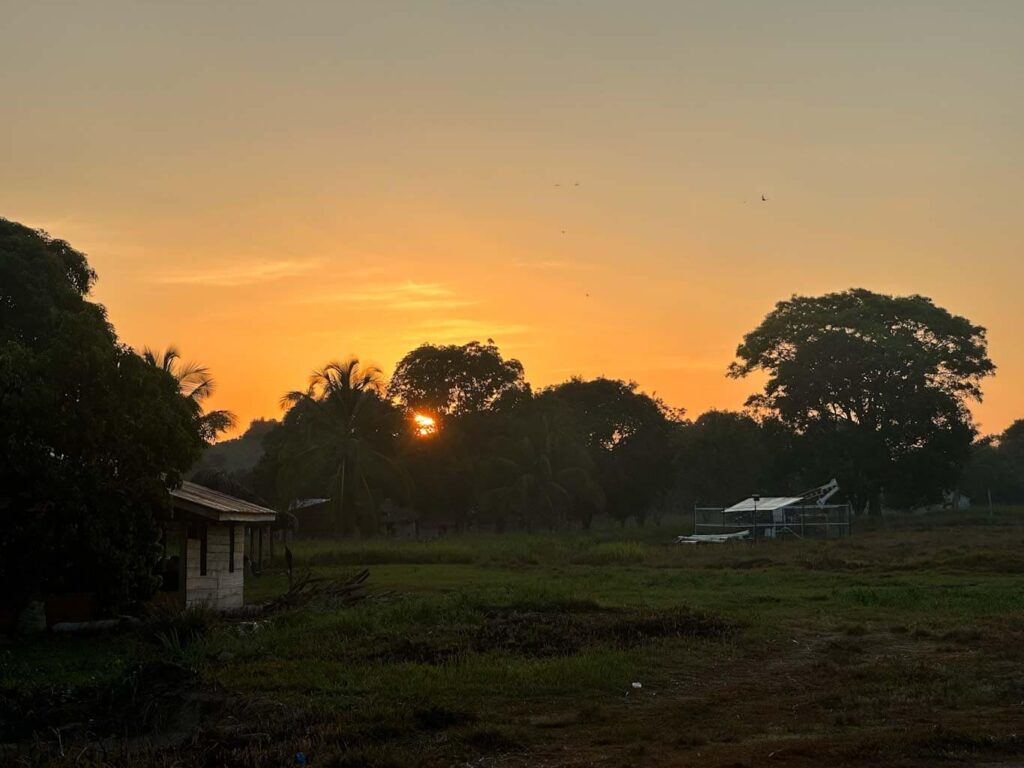
Description: Gain insights into the unique challenges of the jungle environment, including unpredictable weather patterns and varied terrain.
The tropical rainforest, as the name suggests, is a place that receives a lot of rain. It is known for having seasonal rains that can completely transform an area from being a forest you can walk through to one that requires boats to navigate. Small creeks can turn into raging rivers, and other times rivers can run so low that areas normally accessible by boat can go from taking a few hours to reach to taking several days to reach. It is never the same, and this unruly nature of it has made it still to this day extremely complicated for humans to effectively move in, live in, cultivate, and control. This, of course, ultimately has left it, to some extent, as it was intended to be, intact.
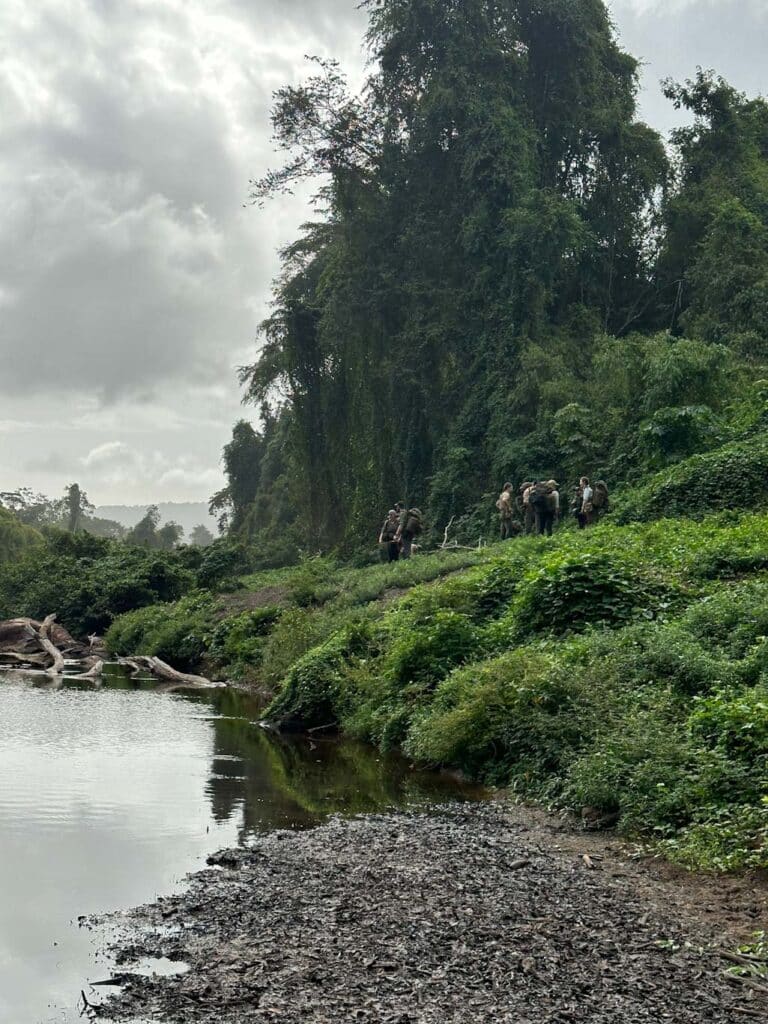
Must-Have Jungle Equipment
What does this mean for your equipment? Well, in short, prepare for everything! At least if you are going on a multiday trip. Clearly, there is a difference from going on a 14-day overland mountain expedition to a 3-day overnighter in the rainforest, but besides the fact that you need more food, the base equipment is pretty much the same. As an example, you would always need the same amount of clothes, hammock, machete, footwear, rucksacks, dry bags, etc.
Duration in the jungle
The potential threat to you in the jungle is in a day as a singularity, equal whether you are spending 3 or 50 days. This depends on the character of your activities clearly. If you are hiking 10 days in jungle covered mountains each day there would be the same threats present. Clearly, the longer exposure people have to the environment, the statistically higher their chance of something happening is right? This is actually a debated point, as you might say that the longer you spend, the more you tune in to the potential hazards.
Stay on guard
On the other hand, the longer you stay, you might lower your guard and start to not follow the rules. We have seen both scenarios, but one thing is sure: if you fail to comply with the basics of safety, dear mother nature will correct you. We normally say that whatever we cannot teach our guests, the rainforest will.
Choosing Durable Gear when choosing what Equipment to Use in the Jungle
So how would you know how to choose equipment for the jungle? First and foremost, you need to look at durability. There are a lot of thorns and spikes, insects that can eat through fabric, a lot of water, and sudden harsh sunlight exposure in the environment. You will be on your knees, stepping through mud, up river banks, or walking through rocky hills. Your equipment might be thrown from boats to river banks or shuttled in trucks, tractors, or on ATVs. We will be bold enough to say that if the equipment can endure in the Amazon rainforest, it can probably endure everywhere else.
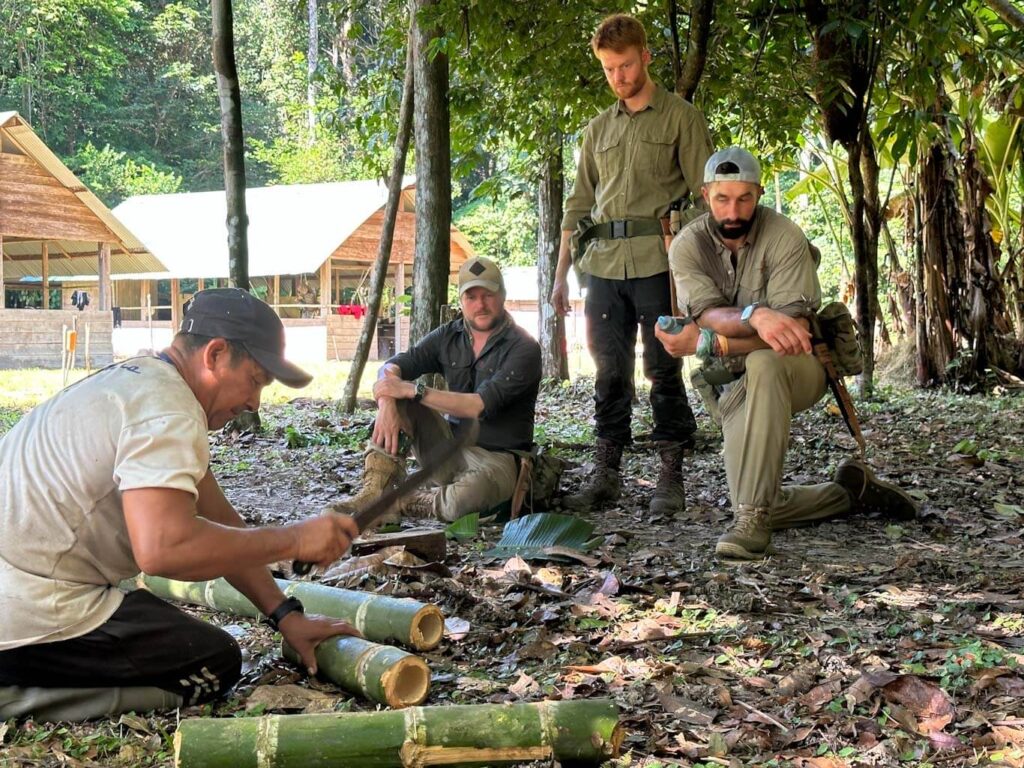
As a starting point, equipment such as boots, rucksacks, camelbaks, belt kits, etc., that are mostly exposed to the environment. It is advised to be of either military grade or similar quality to endure the rainforest. This is not just because camouflage looks all “jungly,” but you can say that if the equipment has been tested to be able to rely on it for your life, we are off to a good start. Our setup is based around the classical PLCE system you would have found across European armies in the nineties and early zeros. It’s widely available in army surplus shops, extremely durable, and cheap. For your personal wear, such as pants, shirts, etc., there are several very good brands, such as Craghoppers, Columbia, and many others, that all offer very good options.
Ultralight equipment is a no-go
Our first advice on clothes is to be cautious with ultra-lightweight types, as these often rip and break as their lightweight nature comes with the compromise of durability. The second piece of advice would be that we have come to the conclusion that all clothes will break eventually. So a good quality pair of 50 USD pants might last just as long as a pair of Fjallraven for 250 USD. Again, we will dig much deeper into this in a specific post.
Footwear in the jungle is essential
Footwear is one of the areas that often causes the most issues, as the wrong choice can let the user end up dealing with blisters that are almost impossible to get rid of until they are out of the forest again. At the same time, they are a vital part of protection against the environment, as your feet will be the body part most in contact with the environment. Jungle boots are ideal, but only when broken in. Long boots/wellies are an excellent choice when durable enough, but very importantly, normal hiking boots made of Goratex can create athlete’s foot, a medical condition that can completely disable a member of a jungle trip.
Remember to always order boots well in advance, then put some load on your back and go out and do that 5-10K walk to ensure that they fit! Read more about our advice for jungle boots here.
Comfort is almost equal to durability, and there, for sure, needs to be a balance in between. Everything is a compromise in the jungle and you can never get the most durable setup while at the same time having the world’s greatest comfort. When all this is said, especially for overland expeditions in the rainforest, having belts that create scrapes at pressure points, the wrong socks that give you blisters, or a shirt that makes it unbearable to carry your rucksack is absolute torture. Everything also needs to be functional, such as easy access to a machete, electronics, a first-aid kit, hydration, and so forth. All this will be covered in associated posts.
Things to consider before you head to the jungle
Whether you are planning your own expedition or joining one that is arranged for you, all extended visits to the jungle should be well planned and thoroughly considered. There are a myriad of small, nitty-gritty details that can all fail and make for a rather rough experience. Especially if all you really wanted was to explore the most biodiverse place on the planet.
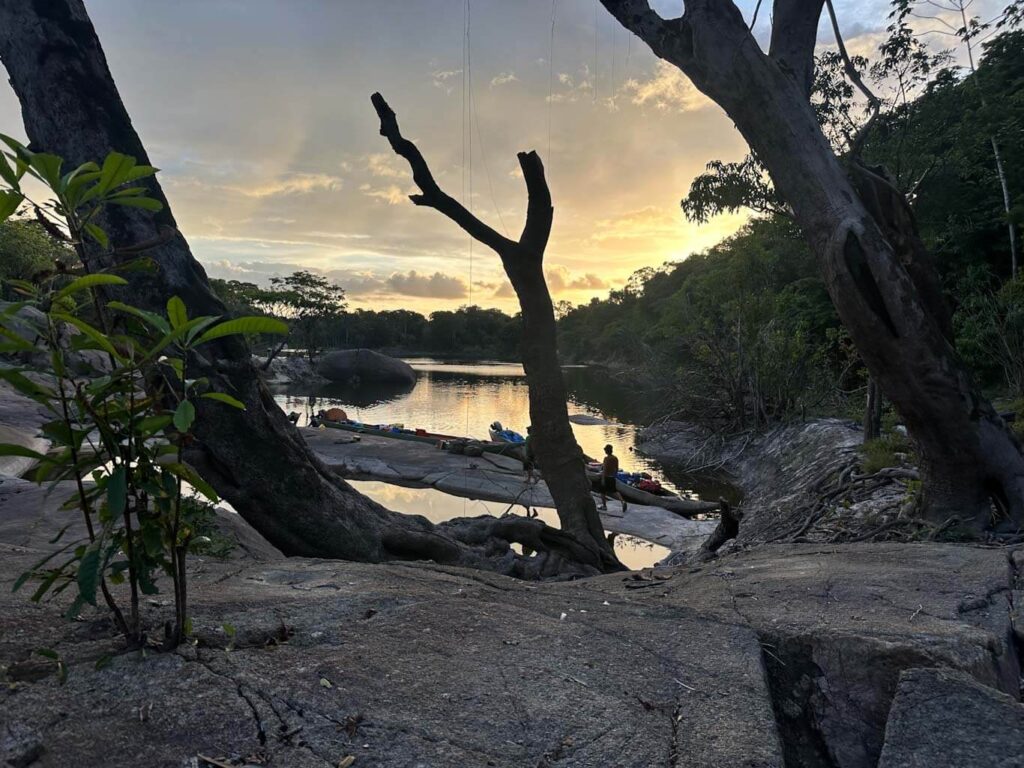
Another consideration is to always make sure to bring locals or indigenous members to understand the area you are in. You can be equipped with A+ equipment, but nothing compares to having an intimate understanding of the specific area visited. Our team consists of expert guides who have traveled and worked extensively across Guyana, but we never venture out without bringing local guides to new areas. Even in a place like Guyana, the rainforest can be dramatically different from the mountains, the lowland, and the coastal area. You might think, “What can go wrong?” But trust us, when things go sour in the jungle, it happens fast, and it happens with a velocity that will make you instantly regret having ever embarked on whatever visit you choose to throw yourself at.”


